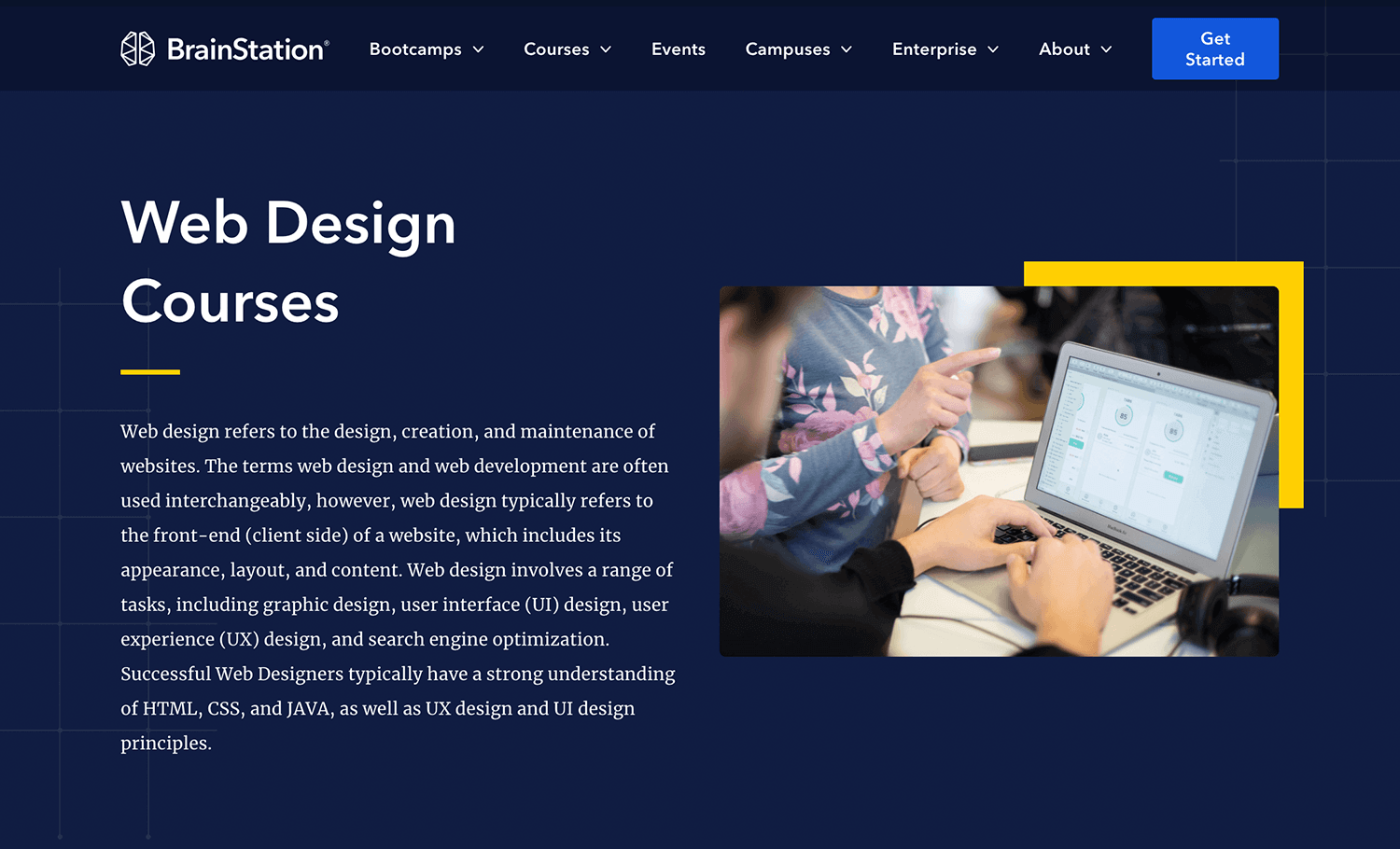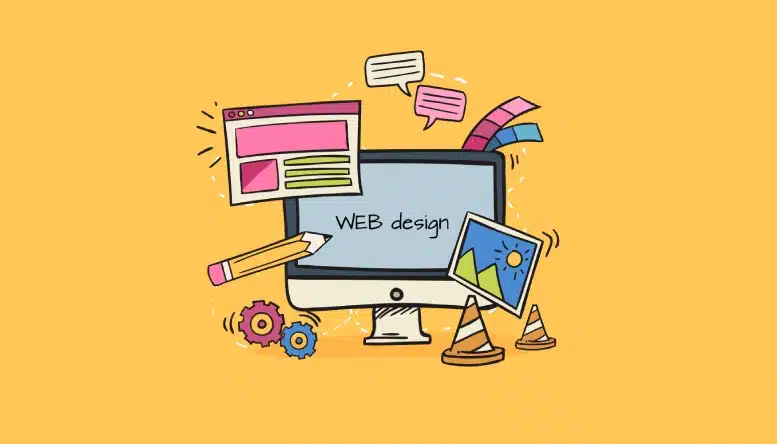Aligned Position Web Design: Boost Your Brand’s Visibility with a Stunning Website
Aligned Position Web Design: Boost Your Brand’s Visibility with a Stunning Website
Blog Article
The Best Types of Website Design to Boost Customer Experience and Engagement
In the ever-evolving landscape of electronic interaction, the performance of website design considerably affects individual experience and involvement. Different style techniques, such as minimalist, receptive, and interactive formats, each offer special benefits that can accommodate varied customer requirements. Comprehending which types of Web layout ideal offer these purposes can be critical for services aiming to boost consumer satisfaction and retention. However, the inquiry stays: which style aspects really resonate with customers and foster meaningful interaction? The expedition of these concepts discloses crucial understandings that may redefine your approach to website design.
Minimalist Website Design
As digital landscapes become significantly chaotic, minimal Web layout has become an effective method to boosting customer experience. This layout approach prioritizes simpleness, concentrating on necessary components while getting rid of unnecessary diversions. By using ample white room, straightforward navigation, and a limited color palette, minimalist layout fosters clearness and routes user attention to essential material.
The core principle of minimal Web design is to create a smooth interaction for customers. By minimizing cognitive lots, customers can swiftly grasp information without feeling bewildered. This direct approach not only enhances functionality however also motivates engagement, as site visitors are more probable to discover a site that is very easy and aesthetically enticing to browse.
Additionally, minimal style typically highlights typography and images, using these aspects strategically to share messages properly. This concentrate on important elements can improve brand name identification and create a remarkable individual experience. Basically, minimal Web design is not just a trend; it is a thoughtful method that acknowledges the value of user-centered style. By removing additional components, developers can produce an extra engaging, effective, and pleasurable Web experience for all customers.
Receptive Web Design
In today's diverse digital environment, receptive website design has come to be essential for creating a smooth customer experience throughout a plethora of tools. As customers accessibility web sites on mobile phones, laptops, tablets, and desktops, the capability of an internet site to adapt its design and web content to different display dimensions and resolutions is critical.
Responsive website design uses flexible grids, pictures, and CSS media queries to ensure that Web content is provided ideally, no matter the tool made use of. This method not only enhances the visual allure of a site but likewise considerably boosts functionality. Customers are most likely to involve with a site that provides a regular experience, as it gets rid of the frustration of having to focus or scroll excessively.
By taking on responsive style, businesses can enhance their visibility and get to a wider audience. In recap, receptive Web style is a basic method that enhances customer experience, engagement, and general fulfillment.
Interactive Website Design
Receptive Web style prepares for boosting individual experience, yet interactive website design takes this a step better by involving individuals in a more vibrant way - Aligned Position Web Design. By integrating components such as animations, clickable prototypes, and real-time responses, interactive Web design astounds individuals, drawing them into a richer browsing experience
This method not only fosters involvement yet additionally encourages customers to discover material proactively instead of passively eating it. Methods such as gamification, where users gain rewards for completing tasks, can substantially boost the time invested in a website and improve total contentment. Interactive attributes can simplify complex information, making it much more enjoyable and absorbable.

Incorporating interactive style components can likewise bring about higher conversion rates, as customers are most likely to engage with a website that actively involves them. Aligned Position Web Design. Ultimately, interactive website design changes user experiences right into remarkable journeys, guaranteeing that visitors return time after time
Flat Style
Defined by its minimalistic technique, level style emphasizes simpleness and functionality, stripping away unnecessary aspects and concentrating on important features. This design approach prioritizes usability, guaranteeing that individuals can navigate user interfaces with ease and effectiveness. By using a clean aesthetic, level layout removes the clutter often found in a lot more luxuriant designs, thereby enhancing user focus on content and performance.
The hallmark of level style depends on its use of strong shades, simple typography, and geometric shapes. These aspects contribute to a visually attractive interface that is both contemporary and approachable. Furthermore, level layout promotes a feeling of quality, enabling individuals to discern essential actions and information without diversion.
Moreover, flat layout is particularly efficient in responsive website design, as explanation its simpleness translates well across different devices and screen sizes. The lack of complex textures and slopes reduces loading times, which is vital for keeping customer involvement. As electronic landscapes remain to advance, level style remains a relevant option for creating user-friendly internet sites that improve general experience. By focusing on necessary functions, flat design not just satisfies individual requirements yet likewise motivates smooth communication, making it an important element of reliable Web design approaches.
Adaptive Website Design
Adaptive website design personalizes the user experience by creating several fixed formats customized to different display sizes and devices. Unlike receptive layout, which fluidly readjusts a single format, flexible design uses unique formats for details breakpoints, making sure optimal discussion on different platforms. This technique allows designers to concentrate on the distinct characteristics of each gadget, boosting usability by supplying exactly what individuals need based upon their context.
Among the main benefits of adaptive website design is its capacity to enhance load times and efficiency. By offering customized web content and photos that fit the individual's device, internet sites can decrease data use Read Full Report and improve loading rates. This is specifically useful for individuals with slower connections or restricted data plans.

Furthermore, flexible design promotes a more constant and regulated branding experience. Since designers create several formats, they can guarantee that the aesthetic components align with the brand's identity across various systems - Aligned Position Web Design. This causes a cohesive individual experience, improving involvement and promoting individual retention
Conclusion
Finally, the assimilation of minimal, receptive, and interactive website design principles dramatically improves customer experience and involvement. Minimalist design fosters clarity and focus, while responsive layout ensures adaptability across different gadgets, promoting availability. Interactive style astounds users through dynamic elements, encouraging exploration and customization. Jointly, these style approaches add to the development of easy to use atmospheres that not only improve complete satisfaction yet likewise drive greater conversion rates, emphasizing their vital value in contemporary Web design techniques.

Minimal design fosters clarity and focus, while responsive design guarantees versatility throughout different tools, advertising access. Jointly, these layout comes close to add to the production of straightforward settings that content not just boost satisfaction but also drive greater conversion prices, emphasizing their essential importance in contemporary Web layout approaches.
Report this page